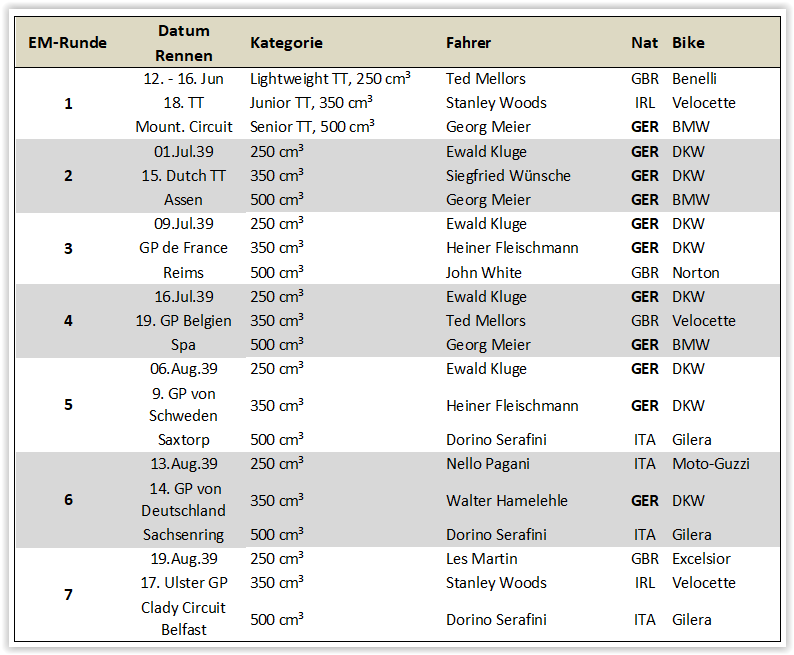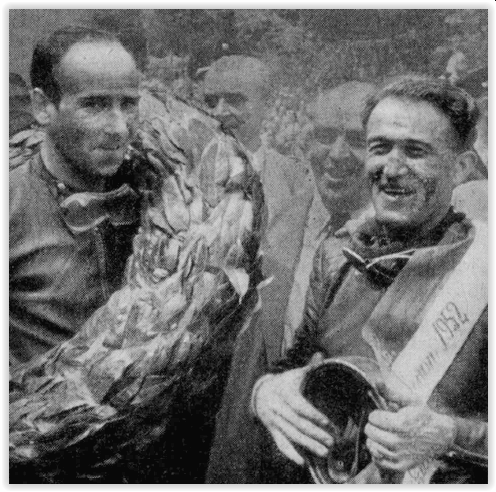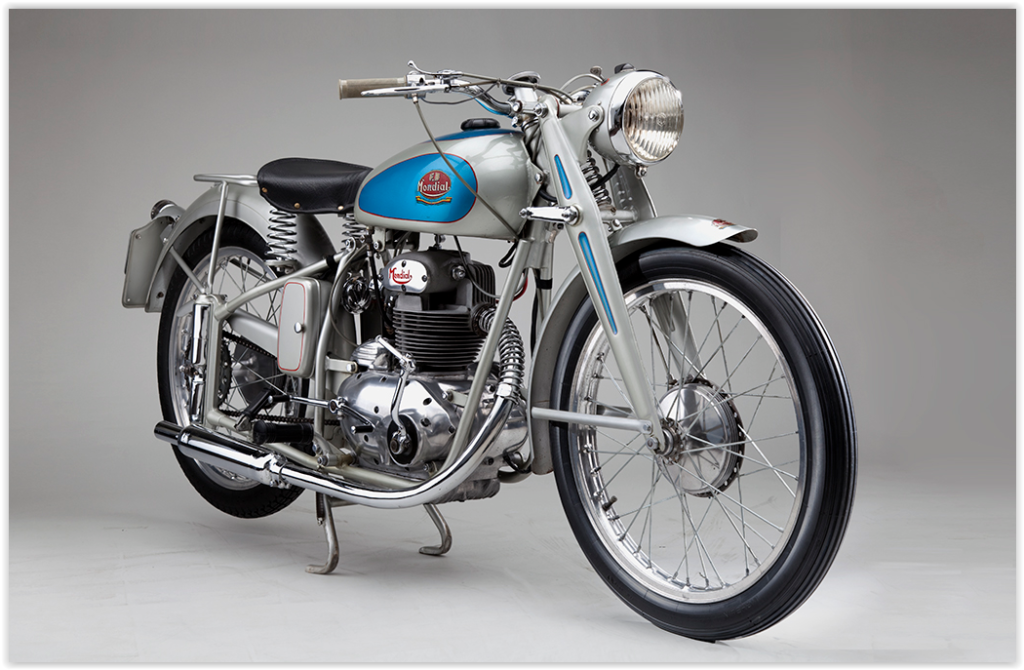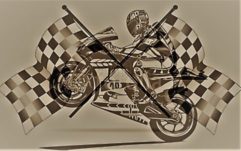
The first real motorcycle Grand Prix year in history
Today, most fans of two-wheeled racing are no longer aware of how high the number of spectators at two-wheeled road racing events was in the golden 1950s. Shortly after the Second World War, which lasted almost six years, the FIM, as the highest motorsport authority, decided to hold a newly introduced world championship that actually did not deserve this title. The main reason for this was the fact that the most successful nation of the last pre-war years was excluded from participation for quite questionable reasons. Even today, those responsible at the FIM are anything but covered in glory when it comes to motorcycle racing, whether at WorldSBK or the Road World Championship. Much of the earlier decades of what was actually a glorious racing series and the history of its heroes are now in danger of being forgotten. We have therefore turned our huge archive upside down to report on the first real year of motorcycle Grand Prix sport in a multi-part and very richly illustrated series.


Striking differences to today – and yet many parallels
One of the most important differences compared to today is, in addition to very different regulations, the completely different world when it comes to the drivers and their relationship with each other, as well as their understanding of the technology. While in professional racing the pilots used to have to work on their machines themselves, everything has changed completely in this aspect since the twenty-first century at the latest. The rivalry between drivers is also much more toxic than it was a few decades ago. Crashes are now a given in GP racing, whereas in the golden 1950s this often meant death. In this respect, perhaps the most positive thing about the development is the increased safety when it comes to race tracks, clothing and materials. Nevertheless, there are still too many serious or even fatal accidents to complain about. This is due to the willingness to take risks, which has always existed in top-class racing and which is indispensable simply because of the passion of the best protagonists in two-wheeled sport.

The fourth World Cup season – finally with German participation!
After a three-year break from Grand Prix two-wheel racing, the German pilots and factories were naturally eager to get back into the world championship. Despite having very modest resources in the early post-war years, they were eager to finally be able to demonstrate their competitiveness again from 1952 onwards. Before the war, many of them were among the absolute best in the world and that is why all fans around the world were excited to see how the drivers from Germany would fare against the strong opposition from other countries. There was definitely a lot to be expected from Ewald Kluge, H. P. Müller, Schorsch Meier, Rudi Felgenheier and Hein Thorn-Prikker, to name just a few of the most popular pilots of that time, and they shouldn’t disappoint their fans in their debut season. Works like BMW, DKW, Horex and NSU should also immediately prove that they didn’t need to hide. The four manufacturers started the GP Sport adventure with a total of 10 German pilots and, in the case of NSU, Roberto Colombo, a works driver from Italy. And the hoped-for initial successes didn’t take long to arrive before they even went a step further a little later.

The starting position before the 1952 season
To compensate for the lack of the French GP this year, the German Grand Prix found its place on the calendar. This was very manageable with only 8 rounds and in the two smaller classes 125 cc and 250 cc there were only 6, while the 350 category offered at least seven races. Only the premier class up to 500 cm³ was held at all eight stations and, as had been the case since 1949, this remained the case until 1960, until the following year, the first event overseas, the Argentine GP in Buenos Aires. In their first World Championship season, the drivers from Germany were of course still the clear outsiders against already established competition. The reigning double world champion (up to 350 and 500 cm³) Geoffrey “Geoff” Duke remained deaf to the call of the Italians and continued to drive for his English home brand Norton. The 500 MV Agusta was converted to a chain final drive instead of a cardan shaft as before. The Velocette factory was the first major factory to withdraw from Grand Prix, but Leslie Graham would continue to receive support from them in the 250cc class. FB-Mondial works driver Carlo Ubbiali, the 125 cm³ world champion of the previous year, was considered the man who died in the 1952 season after the tragic accidental death of his former teammate Gianni Leoni (who had a fatal fall during training for the Ulster GP together with Sante Geminiani on August 15, 1951). had to be beaten. In the 250s, defending champion Bruno Ruffo on Moto-Guzzi, an Italian, was also a big favorite.


Countless manufacturers in the fight for fame and honor
Despite Velocette’s withdrawal, the number of factory teams for 1952 was more than worth seeing. This was mainly due to German participation, after no less than 4 plants decided to take part in the first year of eligibility. A total of 13 manufacturers took part in the world championship. Starting in mid-May in Bremgarten near Bern (Switzerland), the following month we went to the infamous TT (Tourist Trophy on the Isle of Man) and then the third round in Assen (Netherlands) at the end of June. With Spa-Francorchamps in Belgium and the World Championship premiere at Solitude near Stuttgart, things continued without a long break in July. The Ulster GP near Belfast in Ireland followed in mid-August and Monza in Italy in September, before the season finale in Barcelona’s Montjuich Park at the beginning of October in Catalonia. However, only the categories up to 125 cm³ and 500 cm³, as well as the sidecars, were at the start. In principle, only the race in the Royal Park of Monza took place on a permanent race track. All other events were held on closed public roads, with Assen and Spa later becoming permanent courses.


Unless otherwise stated, this applies to all images (© MotoGP).

No Comments Yet